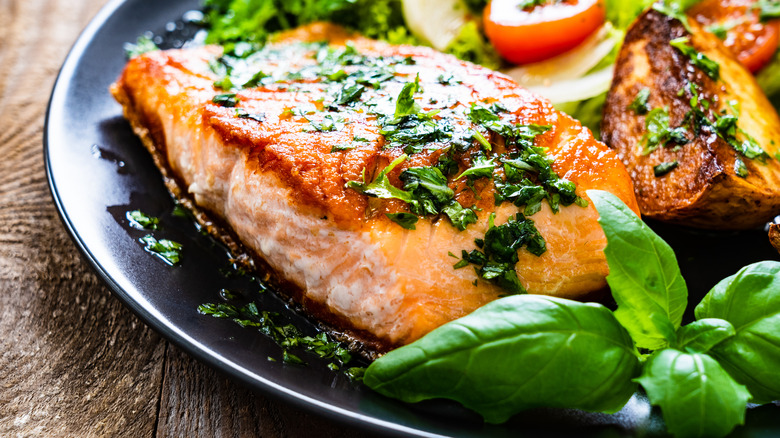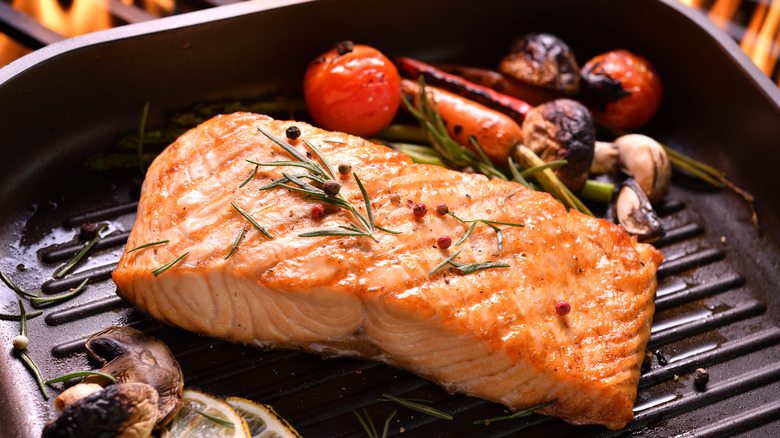Is It Safe To Eat The White Stuff On Salmon?
Yes, it's perfectly safe to eat that white stuff on your salmon fillet. In fact, you eat the white stuff every time you eat this type of fish, you just might not know it sometimes. That's because sometimes the white stuff stays inside. But what is that salmon white stuff anyway? The white goo-like substance you often find marring the surface of that cooked salmon fillet — that fillet that looked so perfect before you cooked it — is a protein called albumin. According to the Oxford Languages definition, albumin is: "A simple form of protein that is soluble in water and coagulable by heat, such as that found in egg white, milk, and (in particular) blood serum."
There's one phrase there that's the operative, and it's "coagulable by heat." See, albumin only makes itself apparent after salmon has been cooked, as when the fish is still raw it remains in liquid form embedded down among the muscle fibers that make up the bulk of the fillet you'll be eating. So it's really your call — go ahead and scrape away those gooey bits or that film of white albumin that formed while you were cooking your fish, or leave it there and bite right in. Because even though many people find the white albumin that shows up on salmon pretty unappealing, it is perfectly safe to eat. And it's just more protein, really, so why not enjoy a bit more of that vital nutrient?
How to prevent white stuff forming on your salmon
So, we know that it's safe to eat the white stuff, called albumin, that forms on cooked salmon. And we know that it's perfectly fine to scrape that albumin goo off of the fish and discard it, though you're just tossing away some protein if you do that. But how to achieve the best case scenario and cook a salmon fillet where no visible albumin forms on the surface in the first place? The answer has nothing to do with the type of salmon you buy (wild caught or farmed) and it's not about how you cook the fish, either.
The reason you get albumin on the surface of a salmon fillet is all about cooking the fish too quickly with too much heat. As salmon (or any meat) cooks, it contracts, and the hotter and faster it cooks and contracts, the more of that albumin is squeezed out to the surface of the fillet, where it coagulates into that undesirable white stuff. Whether you are oven roasting, pan frying, or grilling your salmon, the key is to use a lower heat and cook the meat slowly and steadily. That way, even as the albumin is cooked into that more solid, white form, it will not be squeezed out of the fillet by a quick contraction of the cooking muscle tissue.

